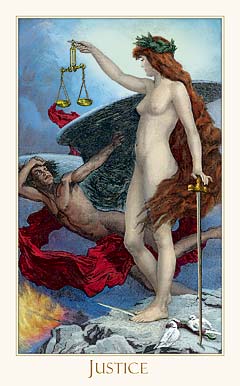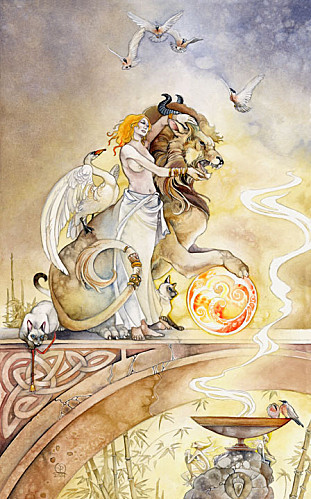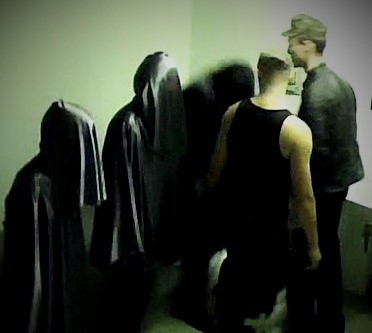Original post: http://www.electro-gn.com/298-legnpararborescence-troisiemepartie
Translation: Vincent Choupaut
–
After reading the two first parts of this article, you now know everything about the game model I called Tree LARP. I can’t finish this article without examining the advantages and the drawbacks of this model.
Strengths
1/ A better effort management: The model breaks the continuity of play (where the only break is the night). From now on, we can catch our breath at regular intervals and concentrate on each scene to come. So we avoid feeling drained with roleplay which disintegrate progressively (indeed roleplay is subjected to an entropy principle!).
Some people see in the continuous game a necessity to the sacrosanct immersion. But what is immersion? Being 24 hours on 24 in a game whereas we are not playing anymore… or taking a deep breath before giving himself all when time comes to play again? As I see it, immersion is not necessarily synonymous with continuous play, when we know that it might be the source of anti-immersive things. Immersion goes also through undistracted players, with beautiful costumes in a beautiful decor, within the framework of relevant scenes. Breaking the slack periods, getting to the point, taking advantage of coherent scenes whose succession makes sense and produces a story, that is maybe immersion.
2/ Time management: The moments of boredom or hesitation are over. The scenes are thought before the game, so that each player has something to do in it, something relevant for his or her character.
3/ Space management: The wandering on the game, the players who don’t know where things are happening, the organizers who cannot be found, the idle onlooker phenomenon, all of that is over. There is nothing worse than these events we have to see just because the organizers planned them. These events in which everybody gathers to witness a wild idea of the organizers exasperate me. Sometimes it lasts a long time. A show should never interrupt the game so abruptly, but always be relevant.
4/ Choices are real choices, which are heavy in the action, on an objective and recognizable way. The trick is to put the player in front of the consequences of his or her choices. It takes us away from a classical larp, in which we always do continuously small choices, so that is difficult to know precisely how we influenced such or such situation. When I speak about choice, it might mean two different things:
– Choices will have all the more impact since they will be presented to the players as such, and since the alternatives will be clearly expressed. The organizers present to the player the different possibilities with full transparency and ask to choose one. So at the end of each scene, each player is at a crossroads. It doesn’t mean of course that the player knows in advance the consequences of his or her choices.
– Choices are more diffuse. The alternatives are not clearly presented to the players. The organizers have to make the list of the conditions to satisfy in each scene, to guide the player through the narrative tree. In most of cases, these conditions are not known by the player.
These are two extremes, and we may find some intermediate solutions. Each author has to choose and come to terms according to his or her wish. Whatever method is used, it’s not useless to remember that a player feels involved in a story because of the conjunction of two factors.
On one hand, the story has an influence on him/her. It doesn’t matter if the stakes are strong (end of the world) or weak (local problem). They have to address the player. On the other hand, the player may have an influence on the story. We say that where there is a will, there is a way, but the opposite is also true. If a player knows he can contribute to the solving of a problem, there are many chances he or her will be worrying about it. These things are easy to set up in a tree larp.
The influence a player may have is indistinct. The direction a game might follow is the sum of innumerable actions. So that it is sometimes difficult to say how a player contributed to the development of the game. In a tree structure, the player makes occasional choices, but which are clearly identified as choices. These choices will be probably not so many than in a classical game, but they will have more impact, involving the player on a specific path, which is a version of the story (planned and thought by the author).
5/ Action management
The global story remains coherent. The succession of scenes, whatever paths are chosen by the players, produces a coherent story. The scenes are all planned and thought so that each path makes sense. It is drastically narratologist, in terms of both game design and the way the players have to invest the game.
There is less risk for unexploited plots. So there is no need for so many plots than in free games; these famous shopping lists created by the authors, being afraid that players get bored. These objectives have the double drawback of having often no synergy between them, and being rarely connected to the main action. In a graph game set up with scenes, we can put in each scene the way to stimulate such or such plot. We can thus be sure that all of them will go off, at a moment or another, because these scenes are thought to stimulate them. I remain convinced that a few objectives, but all emphasized and played, are better than a sum of many things without coherence and life.
When a game is totally free, some plots are solved in two minutes. Other ones cannot be solved. A game thought by scenes allows controlling the rhythm for solving the plots, and the ideal conditions (still in the sense of the story) of solving (solve doesn’t mean win! The solving of a plot could perfectly be a failure).
6/ Less sudden interventions of the organizers during the game: The scenes are thought so that the organizers don’t have to intervene. If an intervention must appear nevertheless, the transitions are still the best moment to do it. It doesn’t disturb the game, because it is an off-game moment for everyone.
Weaknesses
1/ The waste of scenes: It is a relative weakness if we admit that many scenes are also wasted in traditional larps (either players miss the scenes, or they all attend to them or they are directed by an organizer so that they don’t miss them, which amounts to keeping the players on a lead).
Besides, larp could be played again, and new scenes will be probably exploited. It is probably better than forced scenes because they were planned by the authors, where the player has no choice, or delayed, sometimes even cancelled scenes, because the player was unavailable or couldn’t be found. There are always scenes that players miss, because they (or the organizers) are in a rush. With the model I suggest, the player attends without fail to the scenes he or she must attend to, according to his or her choices and decisions he or she makes.
2/ The challenge of big format: The principles of tree larp apply ideally to small workforce. Beyond a certain threshold, the risk is to have to think about groups and not characters, and so to reduce the weight of each player in the development of the story.
3/ Logistical resource intensive: It requires indeed enough modular spaces, an easy flow from a game space to another so that the transitions are flowing freely, and so on.
4/ Unpolished… is someone tempted to help going further into it?
Conclusion
I suggest a game format which shakes up a little bit the larp conventions (in any case the larp conventions as we play it traditionally in France). This format is theoretically neither better nor worse as more usual game formats. I played excellent games based upon the principles of free game. I played also terrible ones. The only interest of the game format I suggest is to present a different game experience, closer to the structure of a story. It is obvious that it may produce, as traditional game formats, good larps and bad larps…
I made a step in the direction of the story, because I enjoy coherent stories. I presented an abrupt game format, it has now to be refined and adapted to the distinctive characteristics of larp.
If you consider that the conventions I wanted to get rid of are essential to larps, that they define what larp is in relation to other games, you will probably not be convinced. But if a few people among my readers reckon that tree larp is still larp, then I didn’t waste my time. And I invite these people to seize this game logic, and to put in it their talents of scriptwriters and stage directors. Because beautiful speeches will never have so much impact than a good game.
Notice to the interested ones. Thanks for your attention.





